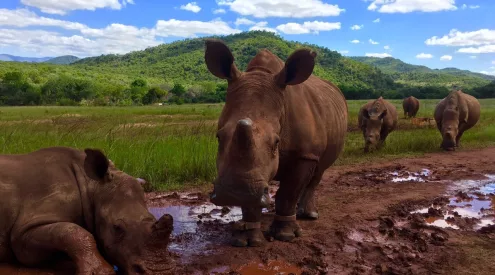The Hope for Wildlife Helicopter Services in Limpopo have successfully tagged a black rhino this week.
‘Searching and locating a black rhino in thick summer vegetation can seem nearly impossible, even with all the right resources at hand!’ the organisation posted on Facebook on January 27.
‘Well done to all involved; trackers, dog, veterinary team, fixed wing and rotorwing! A big shout out to Rhino Revolution for your efforts and Rhino Revolution UK for the funding,’ they concluded.
Searching and locating a black rhino in thick summer vegetation can seem nearly impossible, even with all the right…
Posted by Hope for Wildlife Helicopter Services on Wednesday, 27 January 2021
The black rhino population is under severe strain due to poaching. There was only 5,000 black rhino left in Africa in 2020. The white rhino population is also in danger, with an estimated 20,000 left in Africa, 90% of which are in South Africa, according to Departures.
Tagging is used to keep track of individuals in the populations and monitor their whereabouts. So, how does this process work?
A team consisting of a veterinarian, a field guide and trackers first have to locate the rhino that will be tagged. Then, it is immobilised with a tranquiliser dart. From impact of the dart, it takes about 10 minutes for the rhino to become immobilised, according to go2africa.
The animal will be blindfolded to reduce stress as much as possible. A reversal drug for the sedative is kept at hand, and will be administrated if, for any reason, the rhino isn’t breathing properly or the vet feels it is in danger.
DNA samples will be collected from the rhino’s horn for research purposes. Then, a small tracking device is inserted into the rhino’s ear that corresponds with a system to keep track of all the animals in the area.
The whole experience can take anything from one to three hours, depending on how long it takes to locate a rhino, of course! Authorities plan taggings to aim to have the least amount of impact on the rhino’s wellbeing and stress levels as possible.
As soon as the process is completed, the vet will decide whether the animal will be left to start moving naturally, or to give it the reversal drug.
Picture: Unsplash

















